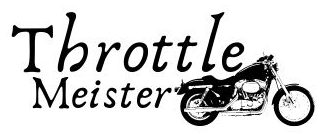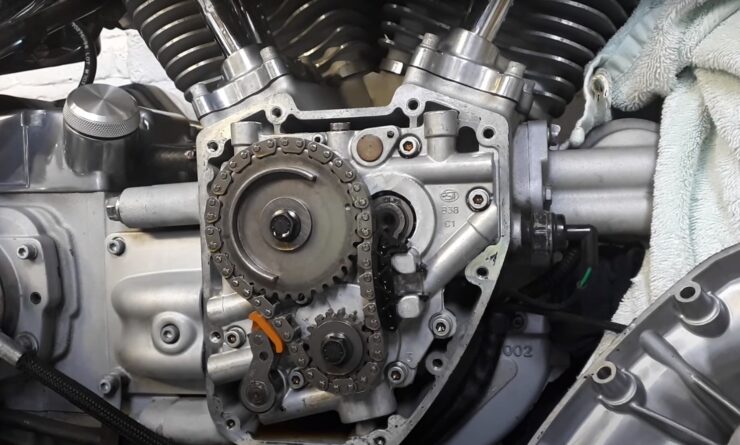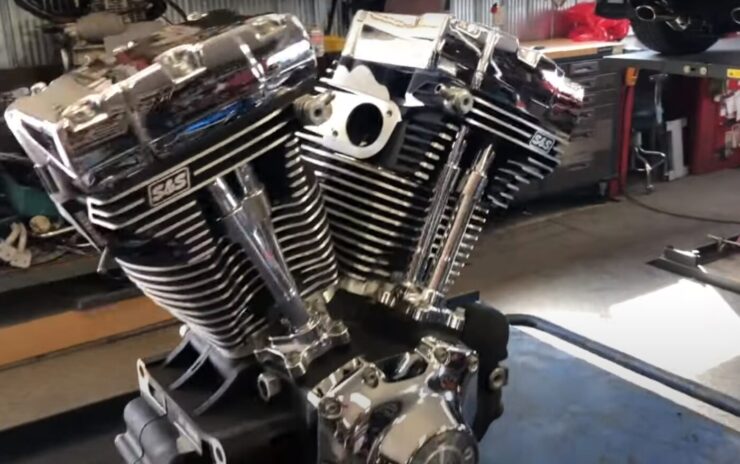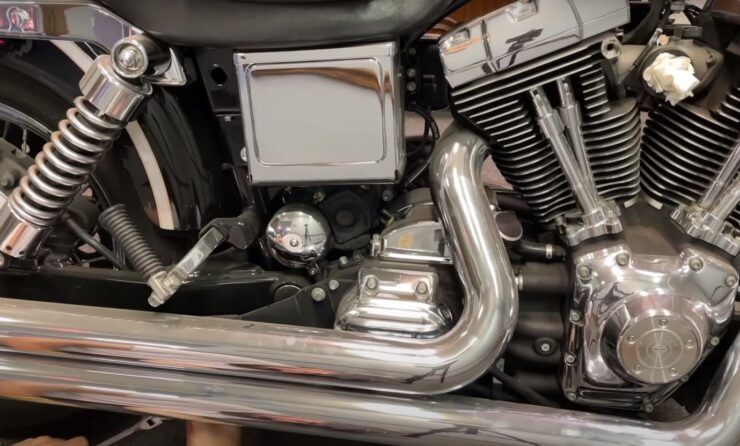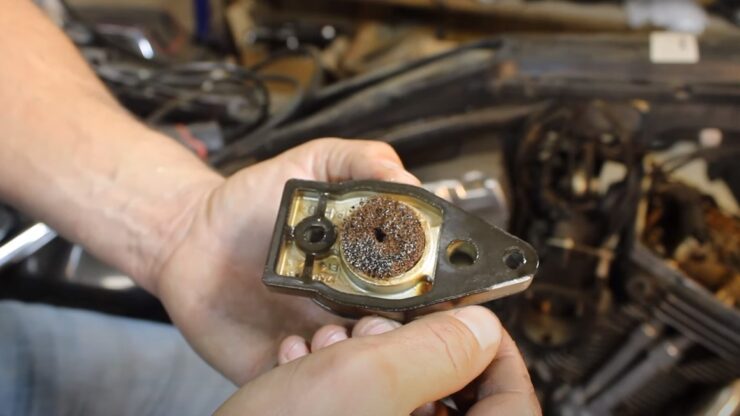Harley-Davidson motorcycles are synonymous with strength, style, and, most importantly, their engines. The Twin Cam 88 engine, also known as the TC88, was introduced in 1999 and has since become a staple in the Harley-Davidson lineup.
As we move into 2024, evaluating the reliability of this iconic engine is crucial for enthusiasts and potential buyers.
Contents
- 1 The Evolution of the TC88
- 2 Technical Specifications
- 3 Performance and Longevity
- 4 Consistency Across the Miles
- 5 Building for Endurance
- 6 Durability and Maintenance
- 7 Wear and Tear
- 8 Simplifying Maintenance
- 9 Reliability in the Modern Context
- 10 The Aftermarket Scene
- 11 Upgraded Components
- 12 Enhanced Materials
- 13 Electronic Enhancements
- 14 Maintenance Tips for Optimal Performance
- 15 1. Regular Inspections
- 16 2. Using Quality Parts
- 17 3. Professional Servicing
- 18 Twin Cam 88 Vs. Twin Cam 96
- 19 FAQs
- 20 Can the Twin Cam 88 Engine’s Reliability Be Compared to Newer Engine Models Like the Milwaukee Eight?
- 21 Are There Specific Climate Conditions that Affect the TC88’s Performance or Reliability?
- 22 How Does the Fuel Quality Affect the Twin Cam 88’s Engine Reliability?
- 23 Is There a Difference in Reliability Between the Twin Cam 88 Engines Used in Different Harley-Davidson Models?
- 24 How Often Should the TC88 Be Serviced to Maintain Its Reliability?
- 25 The Final Verdict
The Evolution of the TC88
The TC88 was a significant leap forward from its predecessor, the Evolution engine. With its increased displacement and improved internal design, the Twin Cam 88 promised more power and a smoother ride. Over the years, this engine has been the heart of many popular Harley models, and its performance has been a testament to the brand’s engineering prowess.
The TC88 quickly became known for its reliability and performance. It was an engine that provided ample torque at low RPMs, making it ideal for the heavyweight cruisers it propelled.
Over its production run, the TC88 underwent various improvements, including better fuel injection systems and enhanced internal components, which further solidified its reputation.
Technical Specifications
| Specification | Details |
|---|---|
| Engine Type | 1450cc V-Twin |
| Cylinder Configuration | 45-Degree Angle |
| Camshaft Drive | Chain-Driven |
| Valve System | Overhead Valves |
| Valve Actuation | Hydraulic Lifters |
| Performance | Torque-Rich and Harley Rumble |
Performance and Longevity
The Harley Twin Cam 88 engine, with its 1450cc displacement, is a powerhouse that has earned a reputation for delivering robust power and torque. This engine’s design allows for a substantial peak torque at lower RPMs, which translates to a smooth and responsive ride.
The torque curve is such that riders can enjoy a thrilling acceleration from a standstill and a strong pull when overtaking on highways. This characteristic torque delivery is a hallmark of the Harley-Davidson brand and is particularly embodied in the Twin Cam 88, making it a favorite among touring enthusiasts.
Consistency Across the Miles
Riders of the Twin Cam 88 often speak to the engine’s consistency. Whether it’s a daily commute or a cross-country tour, the engine’s performance remains steadfast. This reliability is a direct result of the meticulous design and rigorous testing standards employed by Harley-Davidson.
The TC88’s ability to perform under various conditions without faltering is a testament to the brand’s engineering focus on quality and durability.
Building for Endurance
The longevity of the Twin Cam 88 is not by accident. Harley-Davidson’s engineers designed this engine for endurance. With routine maintenance, many owners have seen their TC88 engines surpass the impressive 100,000-mile mark, with some even doubling this milestone.
The key to achieving such longevity lies in regular maintenance practices. This includes timely oil changes with high-grade lubricants, which play a crucial role in reducing internal friction and wear and adhering to the recommended service intervals to ensure all components are functioning optimally.
Durability and Maintenance
The culture of proactive maintenance among Harley-Davidson riders has contributed significantly to the TC88’s longevity. Owners who treat their bikes to regular check-ups and services find that the TC88 rewards them with unwavering reliability.
This engine was built to be ridden hard and put away wet, but it also was designed to be easily maintained and serviced, which encourages riders to keep their machines in top condition.
Wear and Tear
Despite its robust build, the TC88, like any engine, will experience wear and tear over time. Components such as the cam chain tensioner, oil pump, and gaskets may show signs of wear after tens of thousands of miles.
Recognizing this, Harley-Davidson and aftermarket companies have developed improved parts that not only address these wear issues but often enhance the engine’s performance and longevity. For example, upgraded cam chain tensioners are available that offer better durability than the original parts.
Simplifying Maintenance
The maintenance and repair processes for the TC88 have been simplified over the years. With the advent of improved tools and diagnostic equipment, along with a wealth of knowledge shared within the Harley community, tackling common issues has become more straightforward for both professional mechanics and home enthusiasts.
This ease of maintenance ensures that the TC88 can be kept in prime condition, ready to take on the demands of the road.
For those who invest the time in proper care and maintenance, the TC88 proves to be a reliable companion that embodies the spirit of the open road.
Reliability in the Modern Context
As we progress into 2024, the question arises: how does the Twin Cam 88 stand in terms of modern engineering standards? With advancements in technology and materials, the TC88 has benefited from aftermarket support that has further bolstered its reliability.
The Aftermarket Scene
One of the most compelling indicators of the TC88’s relevance in 2024 is the vibrant aftermarket that surrounds it. This ecosystem of third-party components and upgrades has not only extended the life of the TC88 but has also enhanced its performance to meet and often exceed modern expectations.
Upgraded Components
Manufacturers have developed a range of high-quality parts specifically for the TC88, from high-performance camshafts to more efficient oil pumps. These components can significantly improve the engine’s breathability, thermal management, and overall efficiency.
Enhanced Materials
The use of advanced materials has been a game-changer for the TC88. For instance, the replacement of stock parts with those made from aerospace-grade metals or advanced composites can reduce weight, increase strength, and improve wear characteristics.
These materials have been crucial in adapting the TC88 to the demands of current riding conditions.
Electronic Enhancements
Fuel management systems have become increasingly sophisticated, and the TC88 can be retrofitted with modern electronic control units (ECUs) that fine-tune the air-fuel mixture for optimal performance and emissions control.
These systems can adapt to a variety of conditions and rider demands, ensuring that the TC88’s performance remains consistent and reliable.
Maintenance Tips for Optimal Performance
1. Regular Inspections
To keep the Twin Cam 88 running smoothly, regular inspections are crucial. This includes checking the oil levels, inspecting the belts and hoses, and ensuring that all bolts are tightened to the correct specifications.
2. Using Quality Parts
When performing maintenance or upgrades, using high-quality parts is essential. This not only ensures optimal performance but also contributes to the overall reliability of the engine.
3. Professional Servicing
While many Harley owners take pride in servicing their bikes themselves, professional servicing can be invaluable. Trained technicians can spot potential issues before they become major problems and can offer advice on keeping the TC88 in top condition.
Twin Cam 88 Vs. Twin Cam 96
Harley Davidson enthusiasts often find themselves at a crossroads when it comes to choosing between different engine options. Two popular choices are the Twin Cam 88 and the Twin Cam 96, each with its own set of features and characteristics
| Aspect | Twin Cam 88 | Twin Cam 96 |
|---|---|---|
| Cubic Inches | 88 | 96 |
| Timing Belt/Chain | Used earlier and rapidly deteriorated | Replaced with a chain |
| Tensioner Type | Spring tensioner (early) Hydraulic tensioner (later) |
Hydraulic tensioner |
| Maintenance | Inspections every 12,000 miles, often requiring tensioner and chain replacement at 30,000 miles | Improved lifespan, requiring fewer inspections and replacements |
| Gear Installations | Possible if the crankshaft and cam run out are within specification | Possible with both models |
FAQs
Can the Twin Cam 88 Engine’s Reliability Be Compared to Newer Engine Models Like the Milwaukee Eight?
While the Twin Cam 88 is an older model, its reliability is often comparable to newer engines when properly maintained. The Milwaukee-Eight engines feature advanced technology and improved performance, but the TC88’s robust design and strong aftermarket support allow it to remain competitive in terms of reliability.
Are There Specific Climate Conditions that Affect the TC88’s Performance or Reliability?
The Twin Cam 88, like any internal combustion engine, can be affected by extreme climate conditions. Very cold temperatures may require a different oil viscosity to maintain proper lubrication, while extremely hot climates can put additional stress on cooling systems.
However, the TC88 is designed to be reliable across a wide range of conditions, and proper maintenance can mitigate most climate-related issues.
How Does the Fuel Quality Affect the Twin Cam 88’s Engine Reliability?
Fuel quality is critical for the reliability of any engine, including the Twin Cam 88. Using lower-octane fuel than recommended can lead to engine knocking and potential damage. Additionally, fuels with high ethanol content can attract moisture and cause corrosion in the fuel system. Using the correct octane fuel and additives, if necessary, can help maintain the engine’s reliability.
Is There a Difference in Reliability Between the Twin Cam 88 Engines Used in Different Harley-Davidson Models?
The basic design and components of the Twin Cam 88 engine are consistent across different models, so the inherent reliability is similar. However, the engine’s reliability can be affected by the specific demands of each model, such as the weight of the bike and the typical riding conditions it’s subjected to.
How Often Should the TC88 Be Serviced to Maintain Its Reliability?
Harley-Davidson recommends service intervals for the Twin Cam 88 in the owner’s manual, typically every 5,000 miles for an oil change and more comprehensive checks at 10,000-mile intervals.
Adhering to these service intervals is crucial for maintaining the engine’s reliability. However, riders who frequently use their bikes in harsh conditions may benefit from more frequent servicing.
The Final Verdict
In conclusion, the Harley Twin Cam 88’s reliability in 2024 remains impressive. With a strong track record, a supportive aftermarket, and a community of dedicated owners, the TC88 stands as a testament to Harley-Davidson’s commitment to quality and performance.
Whether you’re a seasoned rider or new to the world of Harley-Davidson, the TC88 is a remarkable engine that promises to deliver an exhilarating and reliable ride for years to come.
